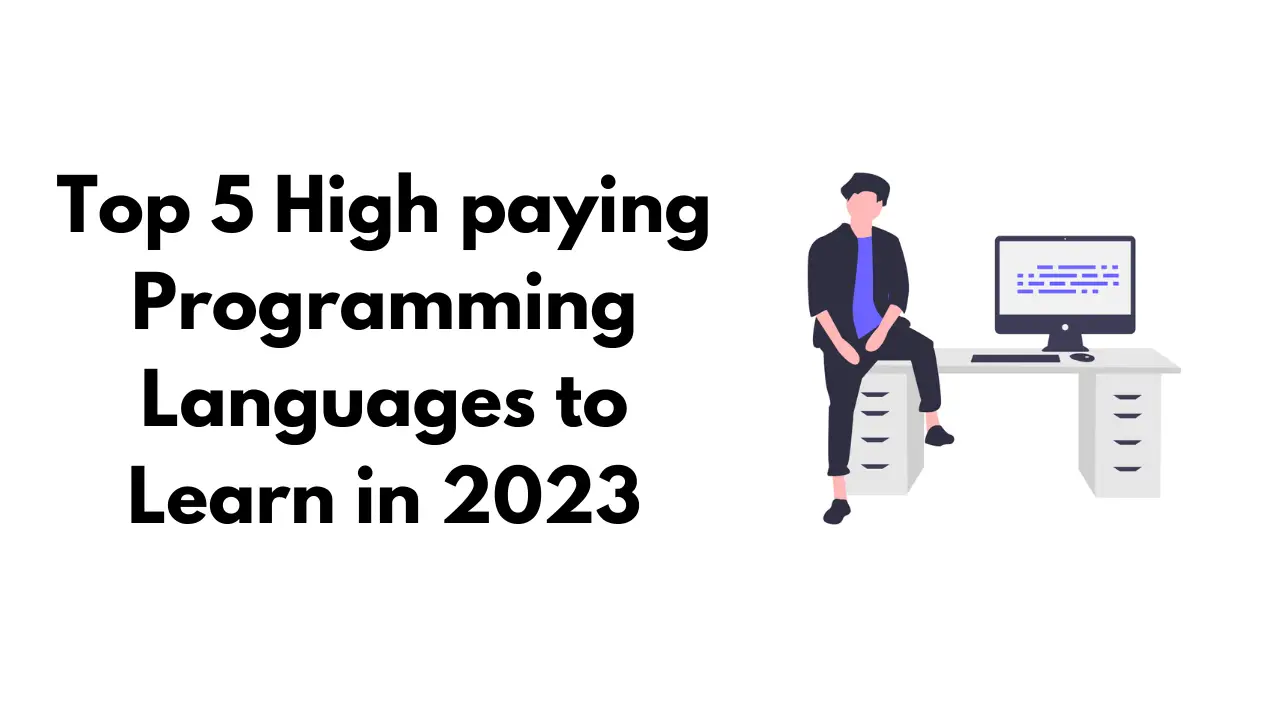The corporate industry has changed drastically during and after the covid-19, especially the tech being most in demand as more and more businesses have moved online increasing the demand for software engineers.
Computer Science which is the superset of software engineering is a vast field covering a broad spectrum of fields such as Web development, Mobile app development, Artificial Intelligence, Machine Learning, Game development, Stock market / Quant trading and analysis, etc.
These fields cover different industries such as Finance, Hospitality, Security, Analytics, Food chain, Consumer Assistance, Banking, Import Export, Trading, Education, and whatnot.
Each of these fields requires you to have a knowledge of specific programming languages.
In this article, we will see the top 5 high paying programming languages that you can learn in 2024.
Python
Python is the starting programming language that is taught in colleges and many boot camps because of how easy it is to learn and get started with.
A high-level, all-purpose programming language that prioritizes code readability in its design philosophy, which makes heavy use of indentation.
Created by Guido van Rossum in the late 1980’s this language has been since holding its position in the top 10 list.
Being an all-purpose programming language, it can be used for web development, server-side scripting, as a bash script, machine learning and artificial intelligence, data analysis, and data science.
The limit is endless and being popular provides great community support with lots of tools and frameworks built around it that make it easy to get started with language and create things in no time.
Many free and paid courses are available to it. The most prominent one is to learn it for free from freecodecamp.org
JavaScript
The most popular language for the last three consecutive years and the king of the web.
JavaScript also known as ECMAScript is a high-level, frequently just-in-time compiled language. It features first-class functions, prototype-based object orientation, and dynamic typing. It supports event-driven, functional, and imperative programming paradigms and is multi-paradigm.
Designed to work in the browser, it along with its two other partners HTML and CSS powers around 95% of the total websites in the world.
The popularity of this language has increased tremendously after the introduction of Nodejs allowed the use of the language on the server side giving the web developers the capability to learn and use a single language to create the end-to-end website.
Not only this with the emergence of new frontend frameworks such as Reactjs, Angular, & Vue, it has been possible to create mobile apps, desktop apps, & web apps by learning a single framework.
Given the flexibility of the languages, it is the most demanding programming language of this decade and if you are preparing for interviews, do check out JavaScript Interview Cheat Sheet.
C++
The oldest and most stable programming language that gave birth to the other programming and query languages such as Java, and MySQL, and popular tools and frameworks such as Adobe Photoshop, Spotify, Youtube, Microsoft Office, and many more.
The general-purpose, high-level programming language C++ is an extension of the C programming language developed by Danish computer scientist Bjarne Stroustrup.
Performance, effectiveness, and usability were prioritized in the design of C++ in order to facilitate systems development, embedded, resource-constrained software, and big systems that are seen in its adoption in creating desktop applications, video games, servers, databases, streaming, and performance-critical applications such a telephone switch and space probes.
One of the newest adoptions of this language is quantitative trading where it is used in creating low-latency applications for stock trading to provide the most benefits.
Quantitative analysis and Quantitative programming is one of the highest-paying jobs in the market.
Given the ocean of opportunities this programming language provides, it is a profitable bet to learn this language. Also, expert C++ programmers are always in demand.
Java
“Write once, and run everywhere”, With this promise, Java came into existence and has shaken the programming world thereafter.
Designed as a high-level, class-based, object-oriented programming language with as less dependencies as possible. It made developers create platform-independent applications as Java code complies with bytecode that runs on the JVM (Java Virtual Machine) irrespective of the underlying computer architecture.
As it is a strongly typed language, it was easy to catch bugs while writing the code and because it is platform-independent it made it an ideal choice for banking and financial applications.
Also, Android, one of the prominent mobile operating systems is written and built in Java which allows the creation of native Android mobile apps in Java.
Not only this, but web development with the Spring boot (Java web framework) and desktop application development, game development, everything is possible with Java making it an ideal choice to learn in 2024.
Golang
Golang shortly known as Go designed by Robert Griesemer, Rob Pike, and Ken Thompson at Google is a statically typed, complied-high level programming language.
Google designed the language to overcome the issues of then-popular programming languages. It increases programming productivity in an era of multicore, networked machines, and large codebases by picking the good things from them such as
- Static typing and run-time efficiency (like C)
- Usability and readability (like Python)
- Multiprocessing and High-performance networking
And removing the dislikes of C++.
Since its inception, it has become so popular and defacto programming language in many big tech organizations such as Google, Netflix, Paypal, LinkedIn, and Cloudfare.
Given the popularity and demand for the language, it will be a wise decision to learn it.
Because it is designed to overcome the shortcomings of many other programming languages, it can be used to solve the problem that they are used for use, thus making it useful for web development, server-side programming, etc.
